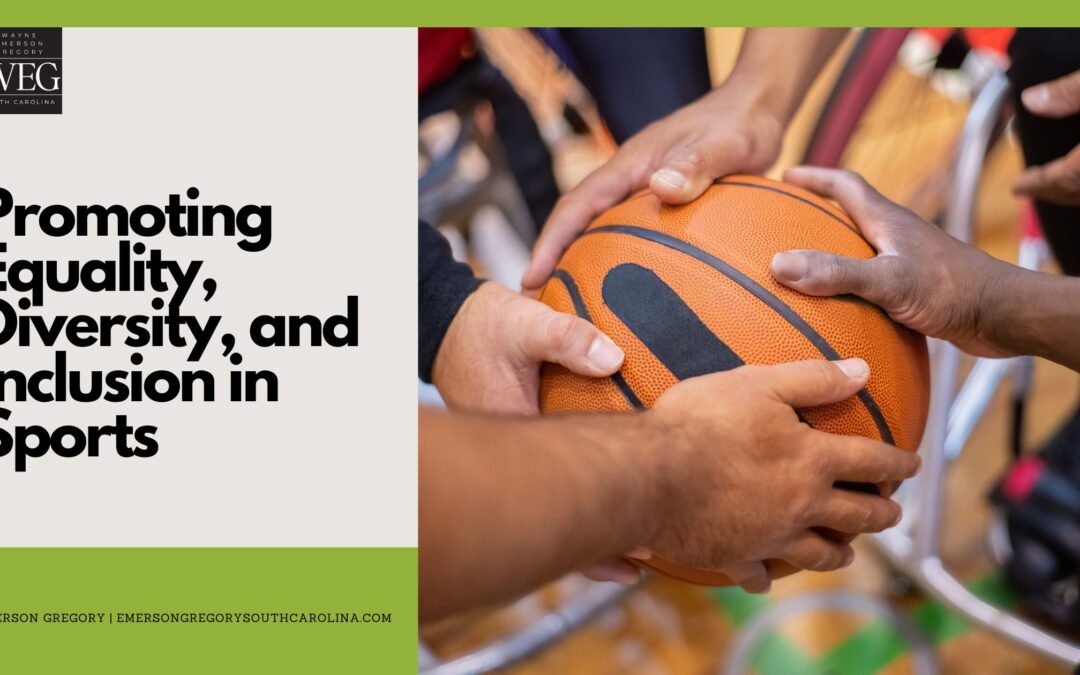Sports have the power to transcend boundaries and unite people from diverse backgrounds, cultures, and walks of life. Yet, for many years, certain groups faced discrimination and exclusion within the sporting world. Today, there is a growing awareness of the importance of promoting equality, diversity, and inclusion (EDI) in sports.
Why Promote EDI in Sports?
- Social Responsibility: Sports organizations and institutions have a social responsibility to promote EDI. By embracing these principles, they can set a positive example for society and inspire change beyond the field or court.
- Equal Opportunities: EDI ensures that everyone, regardless of their background, has equal opportunities to participate in and enjoy sports. It breaks down barriers that may have hindered individuals’ access to sports in the past.
- Performance and Talent: Diversity fosters innovation and different perspectives, which can enhance team performance and talent development. Inclusion allows sports teams to tap into a broader pool of talent and expertise.
- Fan Engagement: Embracing diversity and inclusivity can broaden a sport’s fan base. When people see themselves represented and respected in the sport, they are more likely to engage as fans.
- Social Cohesion: Sports can promote social cohesion by bringing together individuals from diverse backgrounds and fostering a sense of belonging and shared experiences.
Key Initiatives and Actions for Promoting EDI in Sports:
- Anti-Discrimination Policies: Sports organizations should implement strict anti-discrimination policies that prohibit racism, sexism, homophobia, and other forms of discrimination. These policies should be enforced consistently, and those who violate them should face consequences.
- Diverse Leadership: Promoting diversity in leadership roles within sports organizations is crucial. This includes hiring and promoting individuals from underrepresented groups to positions of influence and decision-making.
- Inclusive Participation: Encourage and support participation in sports at all levels, regardless of gender, race, sexual orientation, disability, or socio-economic background. This includes grassroots programs that provide access to sports for marginalized communities.
- Representation: Ensure that sports are represented accurately and inclusively in media, marketing, and advertising. This means depicting athletes and participants from diverse backgrounds and experiences.
- Education and Training: Sports organizations should provide education and training on diversity and inclusion for athletes, coaches, officials, and staff. This can help create a more inclusive and respectful environment.
- Diversity Targets: Set specific diversity targets and goals for sports organizations, from youth teams to professional leagues. Regularly track progress toward these targets and hold organizations accountable for meeting them.
- Celebrating Diversity: Celebrate and showcase the diversity within the sports community. Highlight the stories and achievements of athletes and individuals from underrepresented groups.
- Accessible Facilities: Ensure that sports facilities and venues are accessible to individuals with disabilities and that reasonable accommodations are made to support their participation.
- Support Networks: Establish support networks and organizations for athletes and participants from marginalized communities. These networks can provide resources, mentorship, and a sense of community.
Success Stories in Promoting EDI in Sports:
- Women’s Sports: The advancement of women’s sports has made significant strides in recent years. Organizations like the Women’s National Basketball Association (WNBA) and the National Women’s Soccer League (NWSL) have played a crucial role in raising the profile of women’s athletics.
- Paralympic Games: The Paralympic Games have provided a platform for athletes with disabilities to showcase their talents and abilities. This event has helped change perceptions about disability and sports.
- LGBTQ+ Inclusion: Several sports organizations and athletes have actively promoted LGBTQ+ inclusion. The “You Can Play” campaign, for instance, has encouraged LGBTQ+ inclusion in ice hockey.
- Ethnic and Racial Diversity: The National Basketball Association (NBA) has been at the forefront of promoting racial and ethnic diversity in sports. The league has championed social justice initiatives and players’ advocacy for change.
- Inclusive Marketing: Brands like Nike have launched inclusive marketing campaigns that celebrate diversity and challenge stereotypes. Nike’s “Dream Crazier” campaign featuring Serena Williams is a prime example.
Challenges and Ongoing Work:
While significant progress has been made, there are still challenges to address in promoting EDI in sports:
- Systemic Bias: Systemic biases and prejudices in sports can be deeply entrenched and challenging to eradicate. Sports organizations must continually work to address these issues.
- Unequal Opportunities: Not all communities have equal access to sports programs, facilities, and opportunities. Bridging this gap is an ongoing challenge.
- Resistance to Change: Some individuals and organizations may resist changes aimed at promoting diversity and inclusion, seeing them as threats to the status quo.
- Lack of Representation: Many sports still lack adequate representation of certain groups, both on and off the field. Efforts to increase representation must continue.
Promoting equality, diversity, and inclusion in sports is not just a moral imperative; it’s essential for the growth and success of the sports industry. It’s a journey that requires ongoing commitment, but the benefits of a more equitable and inclusive sporting world are well worth the effort.

